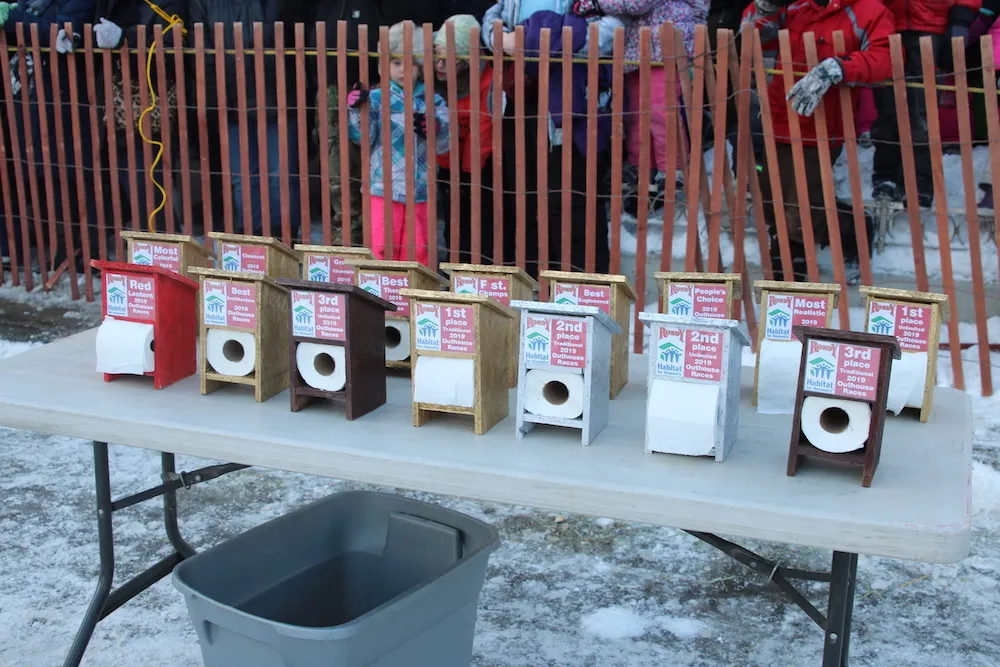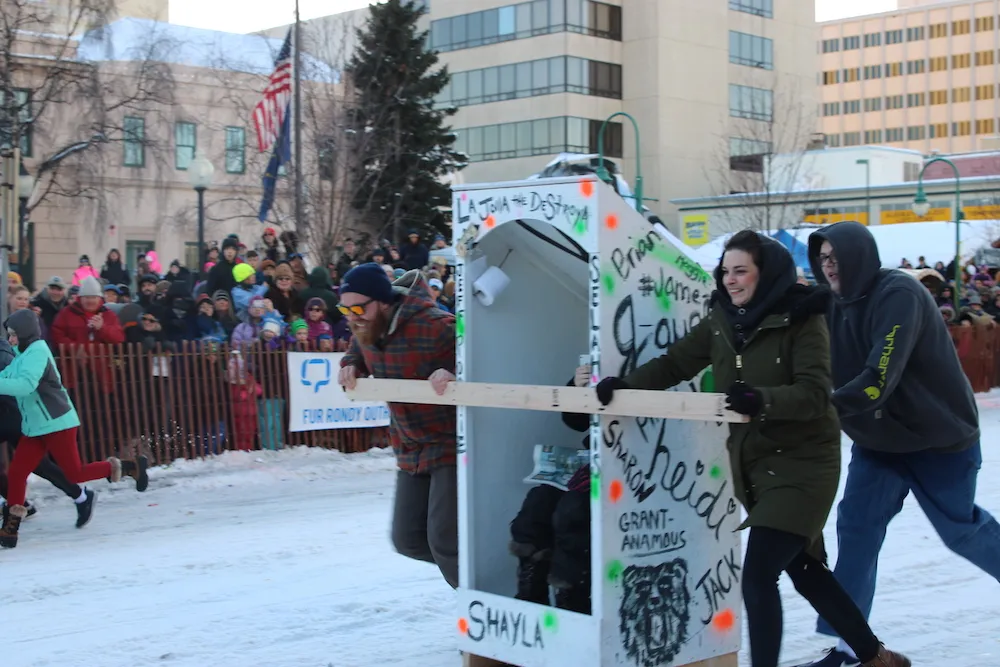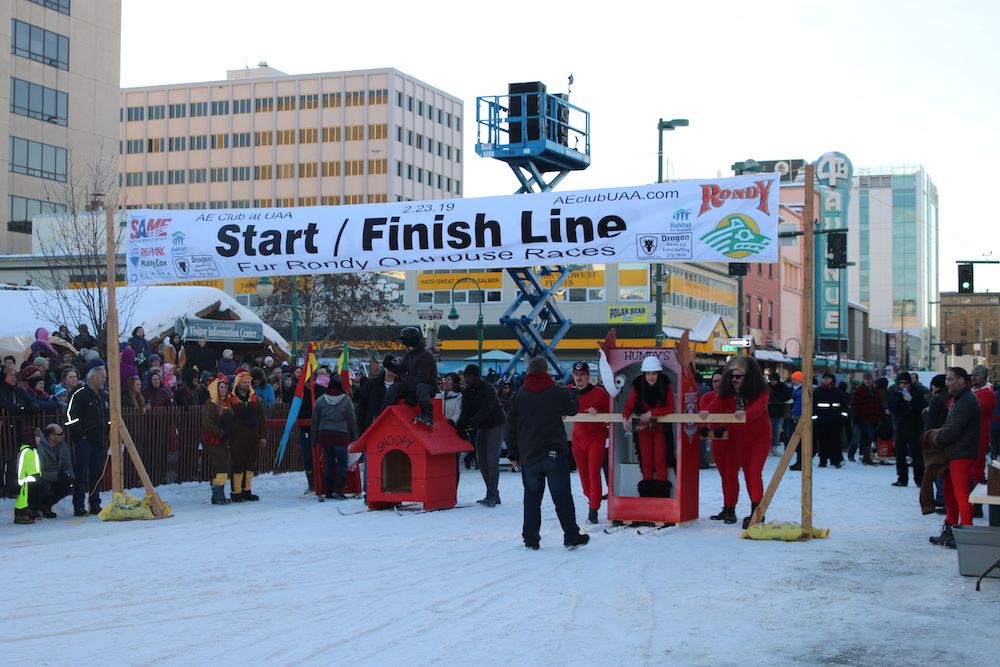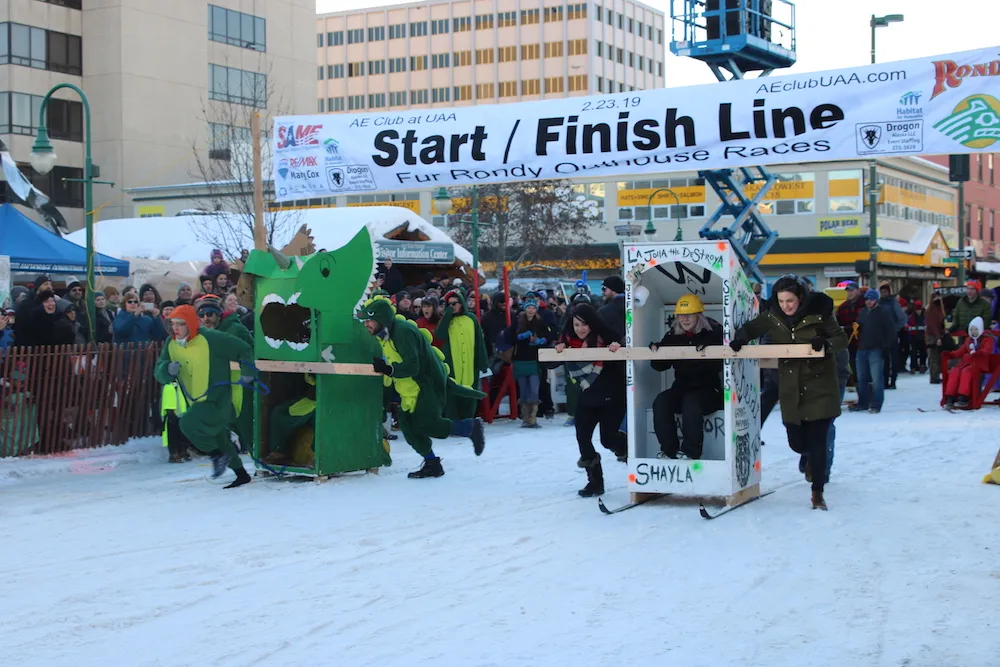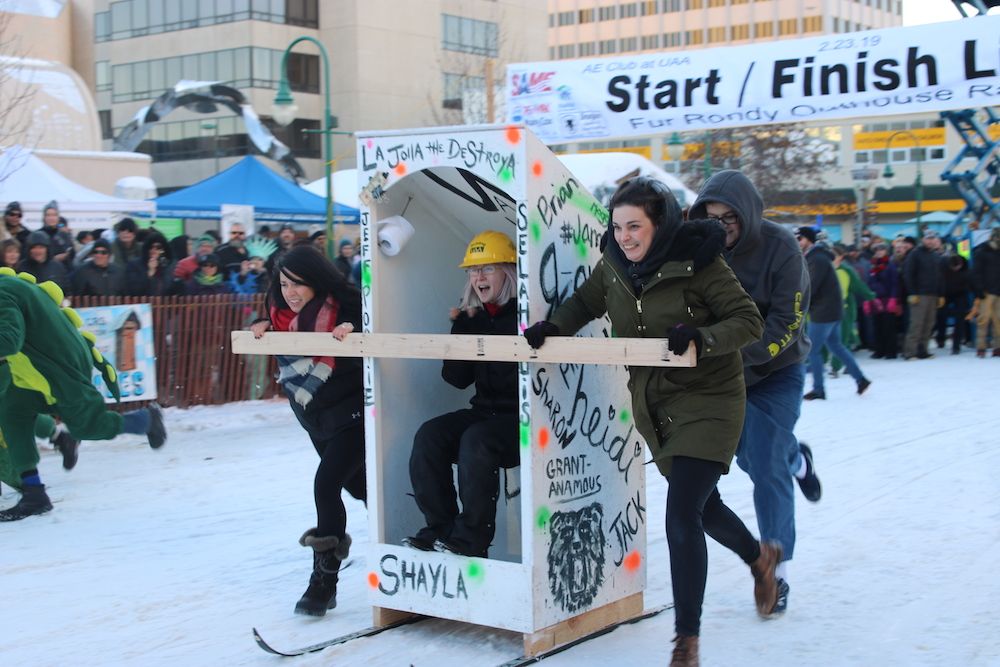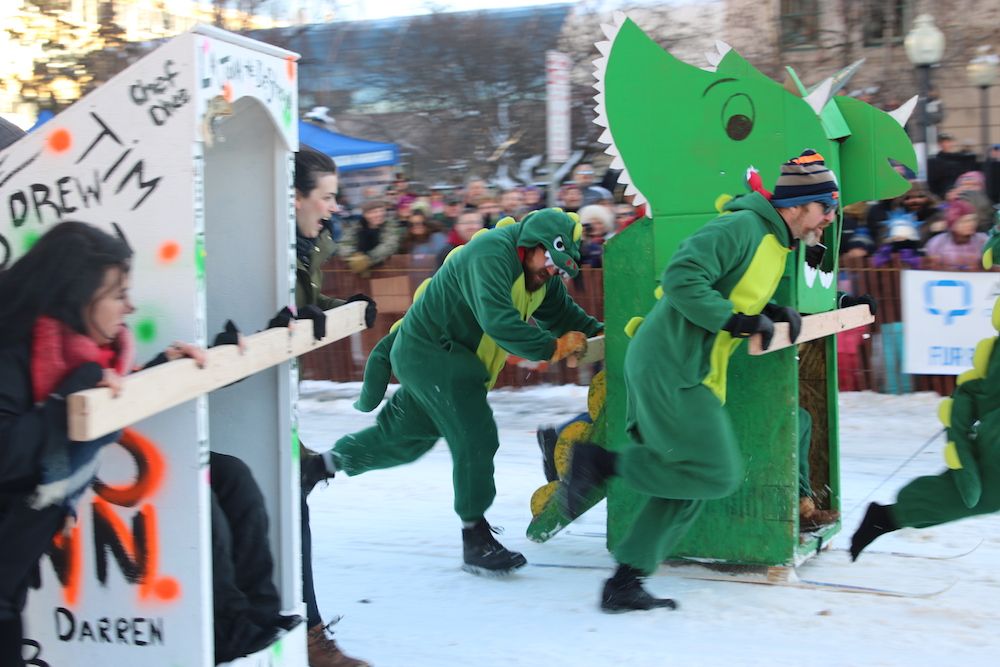Inside the World’s Largest Outhouse Race
Dozens of teams compete in this annual event in Anchorage, all trying their best to not be number two
It’s often said that second place is the first loser, but at the Outhouse Races in Anchorage, Alaska, no one wants to be number two.
Since 2006, teams have descended upon downtown Anchorage to compete in the annual race hosted by the University of Alaska Anchorage's Architecture and Engineering Club. Although similar races exist around the world, this one is considered the world's largest and was started by the school as a fundraiser for Habitat for Humanity. (Each team pays $100 to compete.) The event is part of Fur Rondy, the city’s two-week winter festival. But while vying to win may be the ultimate goal (top competitors receive trophy-turned-toilet-paper holders, not to mention bragging rights), it’s reaching the starting line that often proves to be the most challenging aspect of the event.
To even compete in the race, which took place on February 23 this year, teams of ten must first construct their outhouses and have them inspected by a race committee to ensure that each one is structurally sound for competition.
Bob Maxwell, the AE Club’s faculty advisor and an adjunct professor in UAA’s Facilities, Planning and Construction department (he’s also the event’s emcee), was tasked with giving the inspected outhouses the final green light. Although building an outhouse might seem like a relatively straightforward task, designing one that’s mobile and mounted to a pair of skis or a snowboard adds an unusual twist to the competition.
Outhouses can be built using any number of materials. Plywood and metal have proven to be popular choices over the years, however teams have also fashioned shopping carts and water tanks into roving restrooms. Besides skis or a snowboard, teams of five (with one person riding inside the outhouse) can use a rope to pull or push bars to thrust their outhouses simultaneously to the finish line.
“We also require that each outhouse be equipped with a roll of toilet paper,” Maxwell says. “And, of course, reading material.”
Racing teams can compete in one of two categories: traditional and unlimited. To comply with "traditional" specifications, the outhouse must have, at minimum, a 30-inch-by-30-inch base and three walls, whereas "unlimited" outhouses can be as large as 8-feet wide, 12-feet long and 8-feet tall. During the race, there must be four pushers or pullers and one helmeted rider. This year more than a dozen teams competed. While many of the teams are made up of university students, members of the community also compete, including students from local middle schools and high schools.
"We once had a team from Seattle come up two years in a row to race," Maxwell says.
And because the race is organized by the AE Club, teams put much care into designing outhouses that are not only easy to maneuver, but also able to stay intact during the competition’s multiple heats, which are organized in a bracket system similar to those used during athletic tournaments like March Madness.
“Everything in racing is about the power-to-weight ratio, so generally the lightest outhouse with the youngest pushers wins,” Maxwell says. “Teams will take into consideration aerodynamics while building their outhouses. You don’t want anything that’s too big and clunky. The lighter you can make it the better, but it still needs to be sturdy to do the job.”
The weather is another factor teams must take into consideration. While this year’s event took place on a sunny, wind-free day on a flat snow-packed, out-and-back course measuring just 100 feet each way, snowfall or wind gusts can put a wrench into a team’s racing strategy regardless of the quality of their outhouse's construction. It’s also not uncommon for outhouses to topple over or bump into each other during the race, especially at the turn, where they must go around a pylon without hitting it. (Running into it adds another $10 donation to Habitat for Humanity.)
Teams at this year's event ran the gamut, from competitors dressed up as chickens and pushing an outhouse that resembled a chicken coop to the defending champs, all members of the AE Club, boasting an outhouse modeled after Snoopy's red dog house. The rider sat on top like the Red Baron.
So who was this year’s grand champion? The team representing Anchorage Water and Wastewater Utility, of course.
